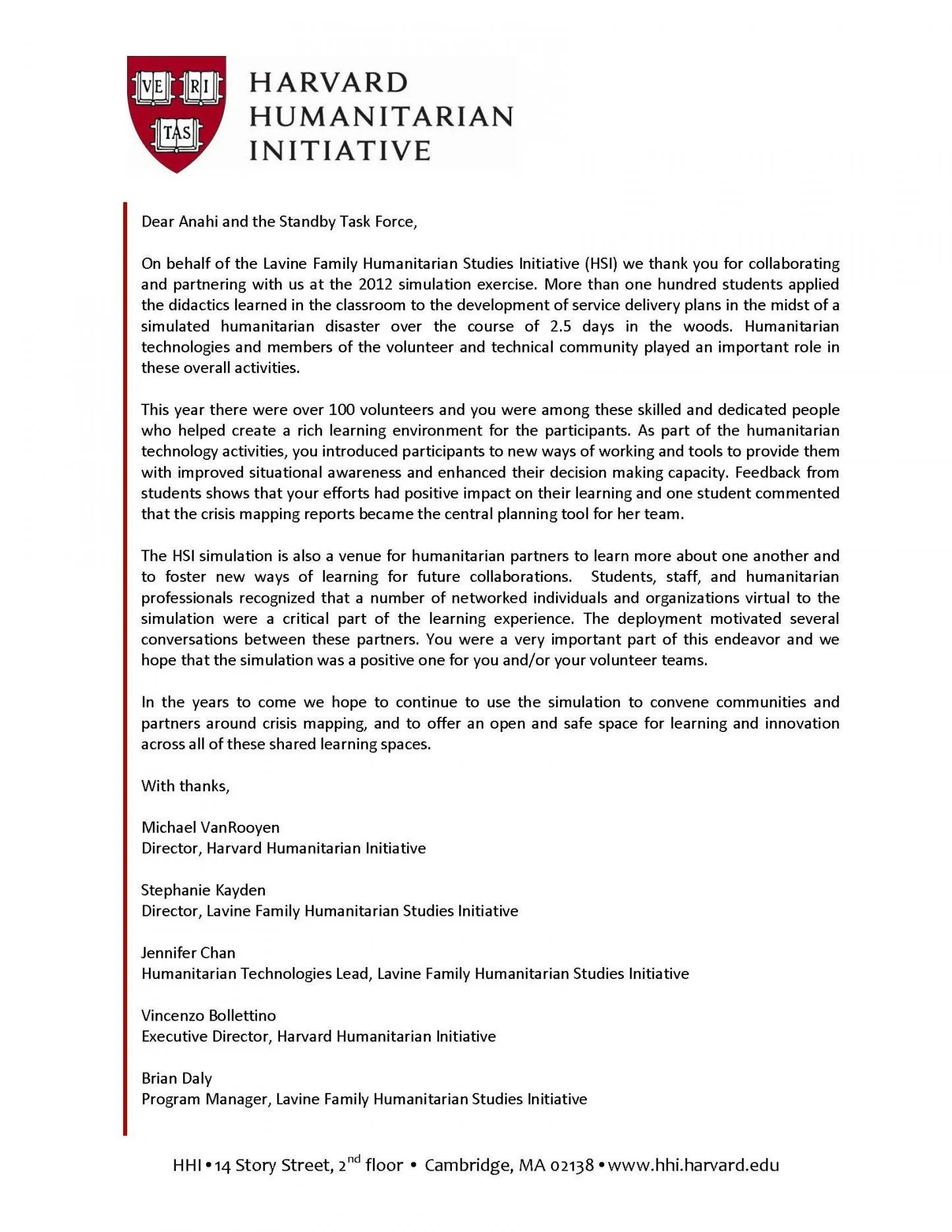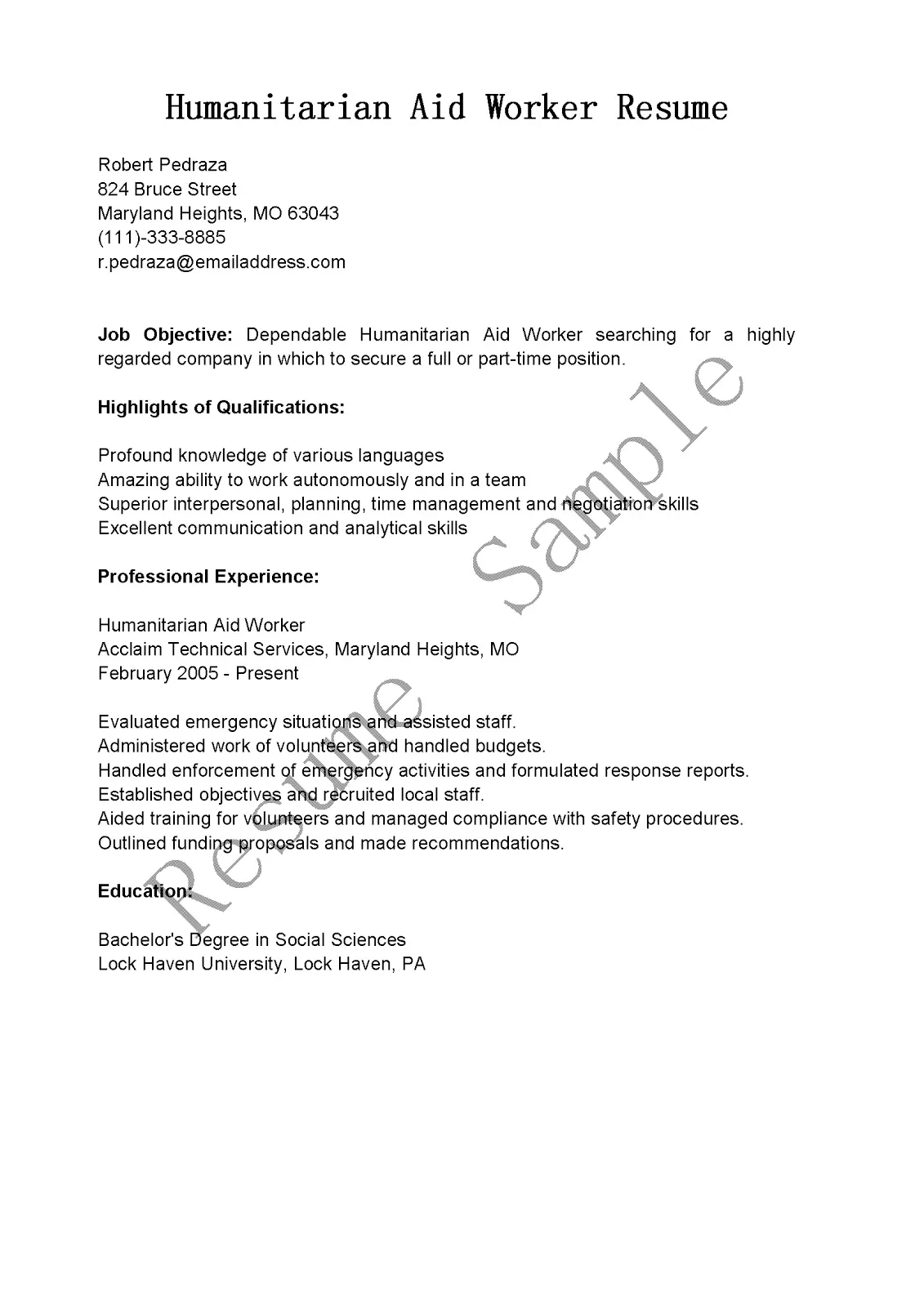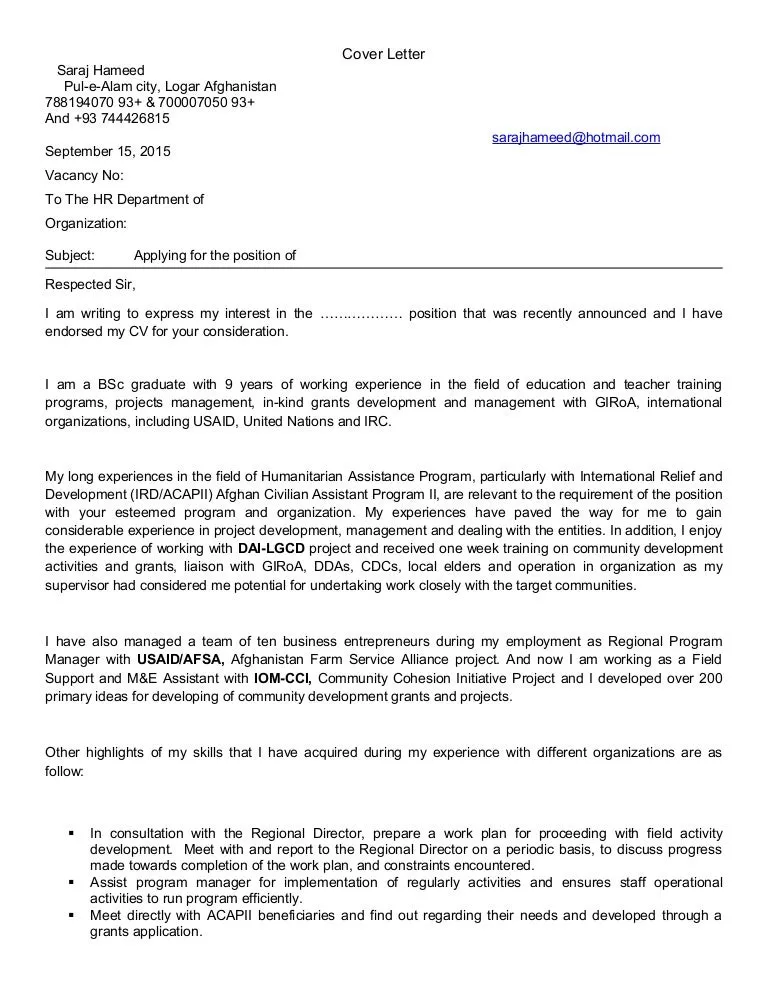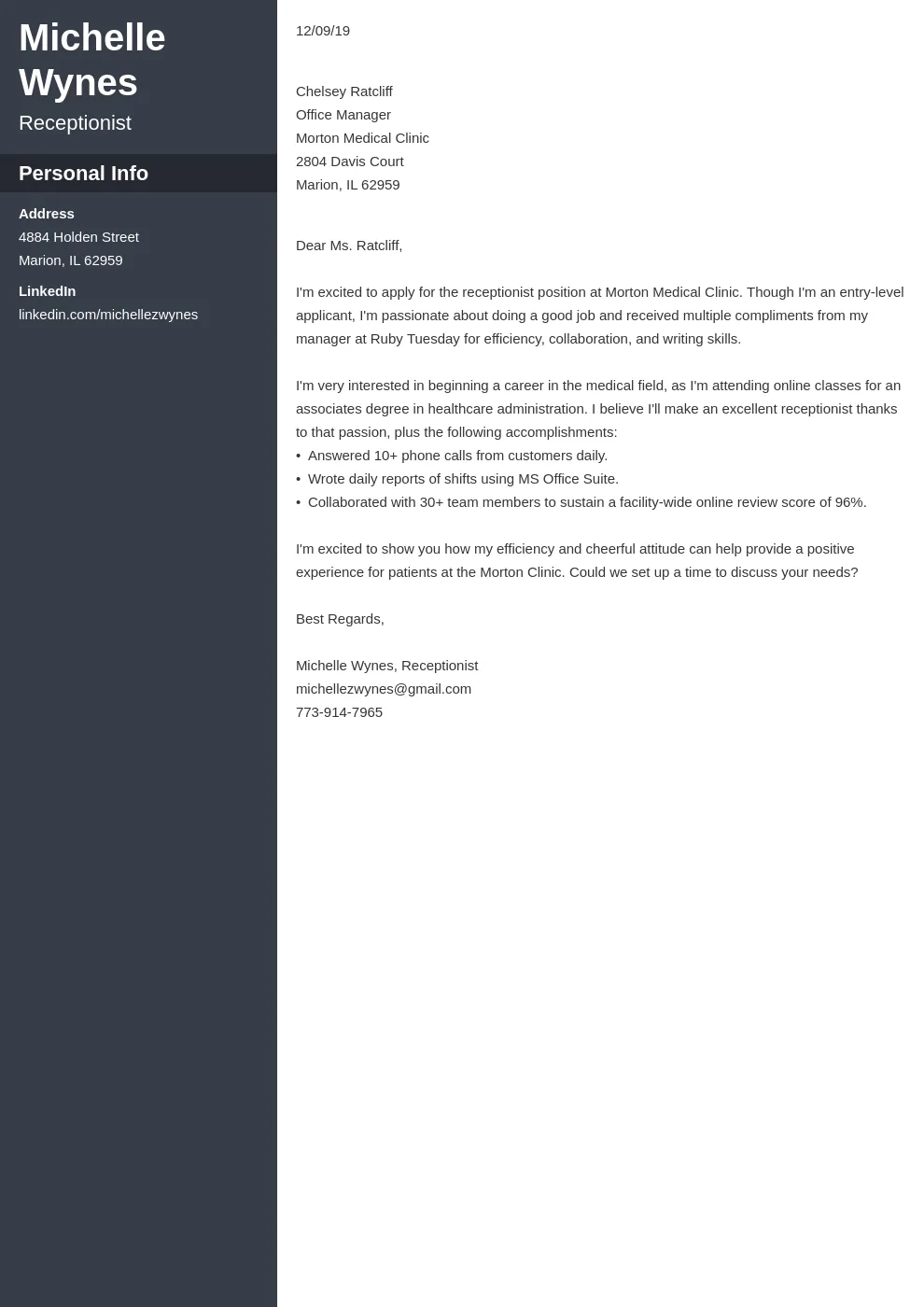Understanding the Importance of a Humanitarian Cover Letter
In the competitive field of humanitarian aid, a well-crafted cover letter is your first and often most crucial introduction. It’s more than just a formality; it’s your opportunity to make a compelling case for why you are the ideal candidate for a humanitarian job. Unlike a resume, which provides a factual overview of your experience, your cover letter allows you to showcase your personality, passion, and understanding of the specific role and organization. This is the chance to differentiate yourself from the countless other applicants striving to make a difference in the world. Your cover letter demonstrates not just your skills, but also your commitment to the humanitarian principles that guide this vital work. A great cover letter immediately captures the reader’s attention and sets the stage for a successful application.
Key Components of a Compelling Humanitarian Cover Letter
A compelling cover letter is built on several essential components that work together to create a persuasive narrative. Each element plays a vital role in conveying your qualifications and enthusiasm. These parts are not just about listing skills; they are about weaving a story that demonstrates your deep understanding of humanitarian work and your commitment to the values of the organization. A well-structured cover letter ensures that your key strengths are highlighted and your passion for the cause shines through, leaving a lasting impression on the hiring manager and increasing your chances of securing an interview. Let’s explore these elements to ensure your cover letter stands out.
Your Header Contact Information

Begin with your contact information at the top. This includes your name, address, phone number, and professional email address. Ensure your email address is professional and easy to read. Avoid using nicknames or overly informal addresses. It also provides the recruiter with a quick and easy way to reach you. This section sets a professional tone from the outset and shows attention to detail, critical in humanitarian contexts.
The Recipient Details
Next, include the recipient’s information, if available. This typically involves the hiring manager’s name, title, and the organization’s address. Researching the hiring manager’s name shows you’ve taken the time to personalize your application. If you can’t find a specific name, use a general title such as “Hiring Manager” or “Recruitment Team.” Addressing your letter to a specific person demonstrates that you have researched the opportunity and are genuinely interested, which often leaves a better impression than a generic approach.
Personalized Greeting
Start your cover letter with a personalized greeting. The best approach is to use the hiring manager’s name (e.g., “Dear Ms. Smith”). If you don’t know the name, “Dear Hiring Manager” is acceptable. Avoid generic greetings like “To Whom It May Concern,” which can make your application feel impersonal. A personalized greeting immediately captures attention and signals that you have put in the effort to tailor your application to the specific role.
Highlighting Your Relevant Skills and Experience

The body of your cover letter is where you showcase your relevant skills and experience. This is your opportunity to highlight what makes you a strong candidate. This section must align your capabilities with the job description and what the organization is looking for. Provide specific examples of your accomplishments and how they align with the role. Use action verbs to describe your experiences. Demonstrate to the recruiter that you possess the required skills and experience, and also the capabilities to excel in the position. Don’t simply list your skills; demonstrate them through specific examples and achievements.
Demonstrating Your Passion for Humanitarian Work
Showcase your passion for humanitarian work by explaining why you are drawn to the field. This is your opportunity to highlight your values and how they align with the organization’s mission. Talk about the specific issues that resonate with you and why you are dedicated to making a difference. Share personal experiences, volunteer work, or relevant academic projects that demonstrate your commitment to humanitarian principles. This will show that you’re not just seeking a job but are genuinely committed to the cause. This will convey your authentic interest in the organization’s mission.
Quantifying Your Achievements with Data
Whenever possible, quantify your achievements to demonstrate your impact. Use numbers, percentages, and specific metrics to illustrate your accomplishments. For example, instead of saying “I managed a team,” say “I managed a team of 10 volunteers, increasing project efficiency by 15%.” This provides concrete evidence of your abilities and makes your cover letter more persuasive. Quantification helps the recruiter understand the scope and impact of your work. Quantifiable achievements make it easier for the hiring manager to understand the impact you’ve made in previous roles and the potential impact you can make in this new role.
Showcasing Your Understanding of the Organization

Demonstrate that you’ve researched the organization by mentioning their mission, values, and recent projects. This shows that you are genuinely interested in working for them and understand their goals. Discuss how your skills and experiences align with their specific objectives and the role’s responsibilities. Tailor your cover letter to show that you have a strong understanding of their work, which requires significant time and effort, demonstrating genuine interest. Referencing specific programs, initiatives, or values of the organization indicates you have done your homework and are genuinely interested in joining their team.
Tailoring Your Cover Letter to the Job Description
Customizing your cover letter is crucial for standing out in the competitive humanitarian job market. Instead of sending a generic letter, tailor each application to the specific job description. This shows that you understand the requirements of the role and have the skills and experience to meet them. This process involves a careful analysis of the job description, aligning your skills, and using keywords strategically. By tailoring your cover letter, you increase your chances of capturing the hiring manager’s attention and showcasing why you are the perfect fit for the position. Always customize each cover letter to fit the specific job requirements.
Analyzing the Job Requirements
Begin by thoroughly analyzing the job description. Identify the key requirements, skills, and qualifications the organization is seeking. Take note of the essential duties, responsibilities, and any specific experience they are looking for. This analysis will guide you in highlighting relevant aspects of your background and tailoring your letter to meet their needs. Understanding the job description’s nuances will help you showcase your value and demonstrate that you are a well-qualified candidate.
Matching Your Skills to the Job Description

Once you’ve analyzed the job requirements, match your skills and experience to those requirements. Identify examples from your past experiences that demonstrate how you have successfully used those skills. Provide specific instances where you’ve achieved results relevant to the job. By directly connecting your skills to the job requirements, you demonstrate that you understand the role and can perform the necessary duties effectively. This direct correlation between your skills and the job requirements is what a hiring manager wants to see.
Using Keywords Strategically
Use keywords from the job description throughout your cover letter. Many organizations use applicant tracking systems (ATS) that scan for specific keywords. Incorporate relevant terms naturally within your sentences. This will increase the chances of your application getting noticed by the ATS and by the hiring manager. However, avoid keyword stuffing; your letter must still read naturally and demonstrate your genuine interest. Keyword optimization is an essential component of a successful cover letter, and it should be done tactfully.
Formatting and Proofreading Your Cover Letter
Formatting and proofreading your cover letter are essential steps to ensure it reflects professionalism and attention to detail. Poor formatting and errors can create a negative first impression and undermine your qualifications. A well-formatted and error-free cover letter shows that you care about your application and are committed to excellence. Taking the time to ensure your cover letter is formatted correctly and proofread meticulously is critical for making a positive impression.
Formatting Tips for Readability

Use a clear and professional font, such as Times New Roman, Arial, or Calibri, in a readable size (11 or 12 points). Maintain consistent formatting throughout the document. Use single-spacing within paragraphs and double-spacing between paragraphs. Use bolding or italics sparingly to emphasize key points. Ensure your cover letter is easy to read and visually appealing. Use white space effectively to prevent the document from looking cluttered. Proper formatting enhances readability, making it easier for the hiring manager to review your qualifications quickly.
Proofreading for Errors and Clarity
Proofread your cover letter meticulously for any grammatical errors, spelling mistakes, and typos. Use a grammar checker, but also read the letter aloud to catch any awkward phrasing or unclear sentences. Have a friend or colleague review your letter for a fresh perspective. A flawless cover letter demonstrates your attention to detail and professionalism. Ensure the tone of your letter is professional and enthusiastic, and that the content is clear, concise, and easy to understand. Errors can undermine your credibility, so proofreading is crucial.
The Importance of a Strong Closing
The closing of your cover letter is an opportunity to leave a lasting impression and encourage the hiring manager to take the next step. A strong closing should express your enthusiasm, reiterate your interest, and include a clear call to action. By closing with enthusiasm and professionalism, you leave the hiring manager with a positive final impression, increasing your chances of securing the job opportunity.
Expressing Your Enthusiasm and Availability

Reiterate your enthusiasm for the position and the organization. Express your eagerness to learn more and discuss how your skills align with the requirements. State your availability for an interview and the opportunity to elaborate on your qualifications. Demonstrating your enthusiasm ensures that you are genuinely committed to the opportunity. This will show that you’re excited about the possibility of contributing to the organization’s mission.
Thanking the Reader and Including a Call to Action
Thank the hiring manager for their time and consideration. Conclude with a clear call to action, such as “I look forward to hearing from you” or “I am available for an interview at your earliest convenience.” Provide your contact information again, just in case. A strong closing leaves the hiring manager with a clear understanding of your interest, your availability, and the next steps. End your letter with a professional closing, such as “Sincerely” or “Best regards,” followed by your name.
